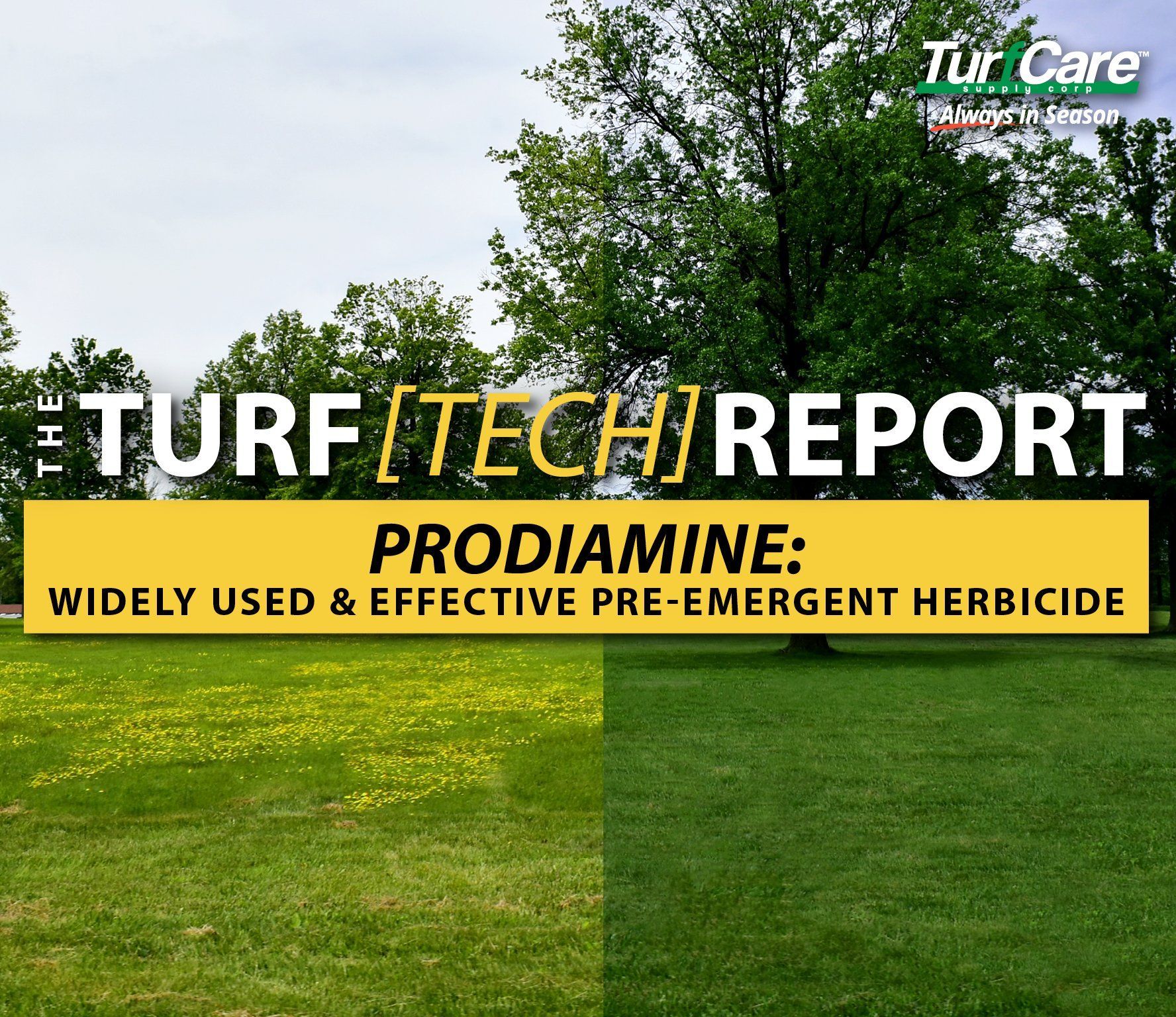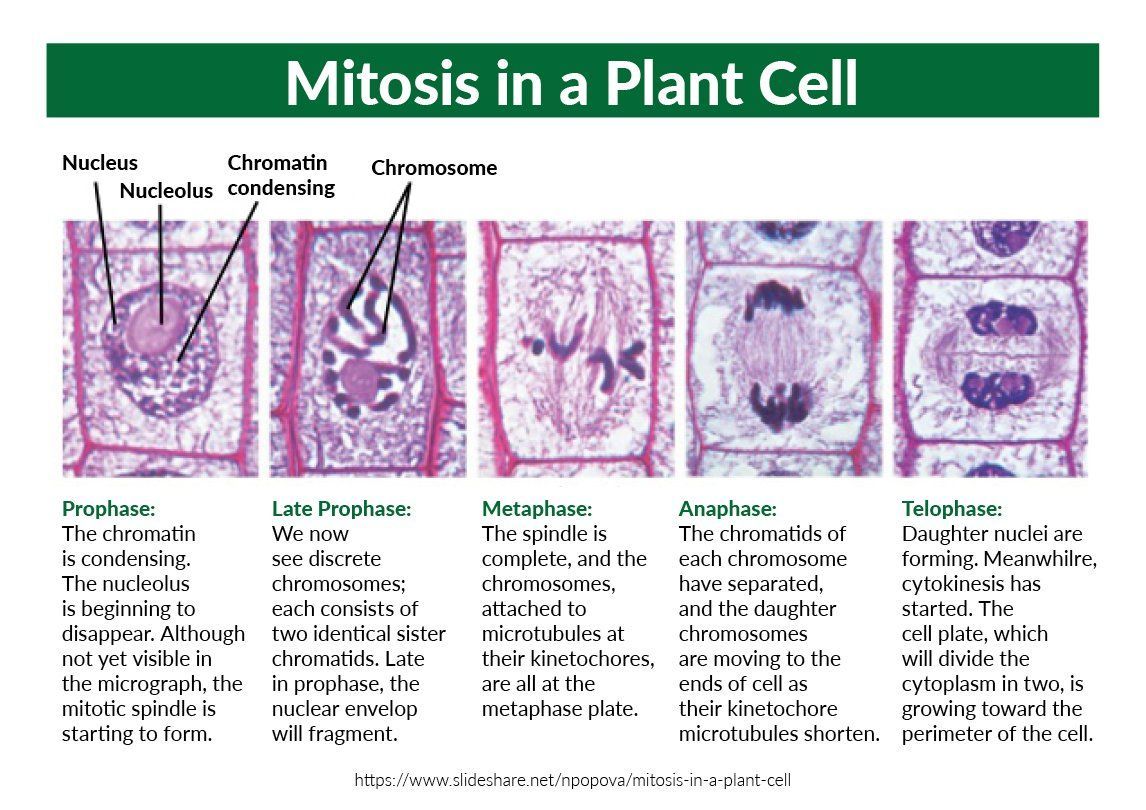The Turf[TECH]Report - Prodiamine: Widely Used & Effective Pre-Emergent Herbicide

DON’T LET WEEDS RUIN YOUR LAWN THIS FALL!
When most of us think about crabgrass and broadleaf weed control, we tend to think about heavy applications of pre-emergent herbicides in the spring. In fact, fall is an equally important time to treat your lawn. All season long, annual grasses, wildflowers, and weeds have been working hard to produce seeds that are feverishly trying to establish themselves on your turf. As established turf begins to slow down its growth rate and enter winter dormancy, weeds will find no refuge in a lawn that has been treated with a pre-emergent herbicide. In this edition of Turf[TECH]Report, we’re taking a closer look at one of the widely used and most cost effective pre-emergent herbicides on the market:
Prodiamine .
WHAT DOES PRODIAMINE CONTROL?
Great for control of crabgrass, prodiamine is also effective against summer annual grasses, annual blue grass,
goosegrass ,
spurge ,
chickweed, and a large number of annual broadleaf weeds. Prodiamine is safe to use on established turf (with exception to golf putting greens) and around ornamentals/established perennials. It is also safe for use on tree farms.
CHEMICAL NATURE
Prodiamine is a member of the Dinitroaniline family of pre-emergent herbicides. It is commonly referred to by its trade name, Barricade. Pre-emergent chemistries similar to Prodiamine include Trifluralin, Pendimethalin, and Benefin. Prodiamine is a popular control agent due to its low volatility and its ability to break down to non-phytotoxic levels in a relatively short time frame. Pure Prodiamine comes in fine granular form and can be dispersed by mixing with water (creating an orange/yellow solution) or tacked onto a granular fertilizer and dispersed with a spreader. Prodiamine has no post-emergent properties.
THE SCIENCE BEHIND THE BIOLOGICAL MODE OF ACTION FOR PRODIAMINE
All members of the Dinitroaniline family of herbicides function as microtubule assembly inhibitors. It sounds complicated, but it’s not so bad once we brush up on our high school biology! Here’s how Prodiamine works:
- Plants, just like all organisms, have cells. All cells must grow and divide (a process called mitosis). Before cells divide, their contents including their chromosomes (DNA) are duplicated.
- Microtubules attach to clusters of duplicated chromosomes and help separate them so that when one cell splits into two, both cells have an equal number of chromosomes.
- Prodiamine works as a microtubule assembly inhibitor. What this means is, Prodiamine stops plant cells from being able to produce tubulin.
- Tubulin is the protein molecule that makes up microtubules.
- In summary, if plant cells can’t make tubulin, then they can’t make microtubules. If they can’t make microtubules, they can’t separate their chromosomes during mitosis. And if they can’t separate their chromosomes, the cell fails to divide. If cells can’t divide, the plant stops growing. Ultimately, the plant dies.

THE SIGNS & SYMPTOMS THAT DEMONSTRATE PRODIAMINE IS WORKING Remember, Prodiamine is a pre-emergent herbicide, which means many weeds and grasses treated in the seedling stage will fail to germinate. Those that do germinate usually experience severely stunted growth characterized by short, swollen coleoptiles and hypocotyls (the emergent stem and first leaf). Prodiamine impairs root development; treated plants typically experience short stubby secondary roots and limited root hair development. This results in the plant starving due to its inability to find nutrition in the soil. Thickened short stems and crinkled leaves are another indication of Prodiamine’s effectiveness.
WHEN SHOULD I APPLY PRODIAMINE?
Prodiamine can be applied all by itself, or in conjunction with a fertilizer or liming treatment. For maximum effectiveness, an early spring application is suggested as temperatures begin to climb into the 50 degrees Fahrenheit. An additional application in the fall is also important and will help ensure that weed seeds from the current growing season do not get a chance to establish themselves going into winter and fewer weeds will be present in your turf grass in spring. For lawns with excessive weeds and crabgrass, a mid-summer application may be necessary. It is safe to apply Prodiamine three times in the same growing season (at regular intervals).
WHEN IS IT SAFE TO RESEED?
As is the case with all pre-emergent herbicides, DO NOT APPLY Prodiamine to newly seeded grass, nor newly germinating grass, as this will kill establishing grass in both cases. It is recommended that reseeding take place no earlier than 6-8 weeks after a treatment.
JARGON ALERT
- Non-phytotoxic: not poisonous to plants
- Microtubules: a hollow cylindrical structure in the cytoplasm of most cells, involved in intracellular shape and transport.
For professional fertilizers, humic and AMP-XC™ enriched products available, please visit TurfCare’s online Product Catalog.
For green industry professionals or others interested in ordering Turfcare products, please contact our Customer Service to find a distributor near you.
The TURFReport Highlights:
Additional Articles and Insights
















